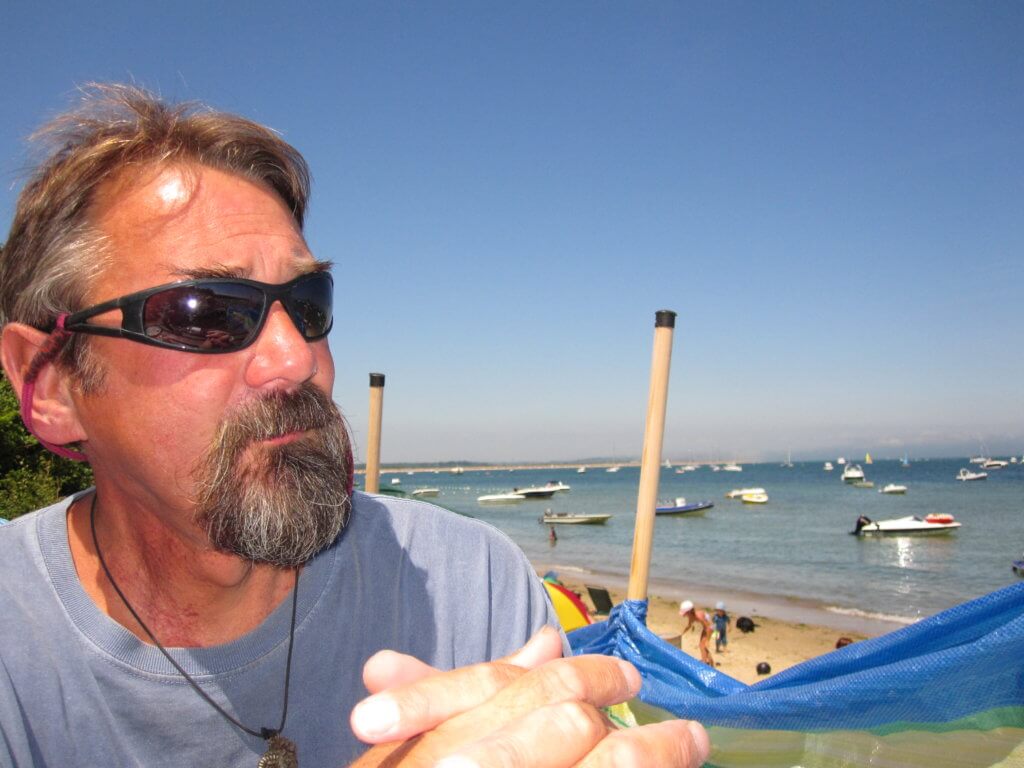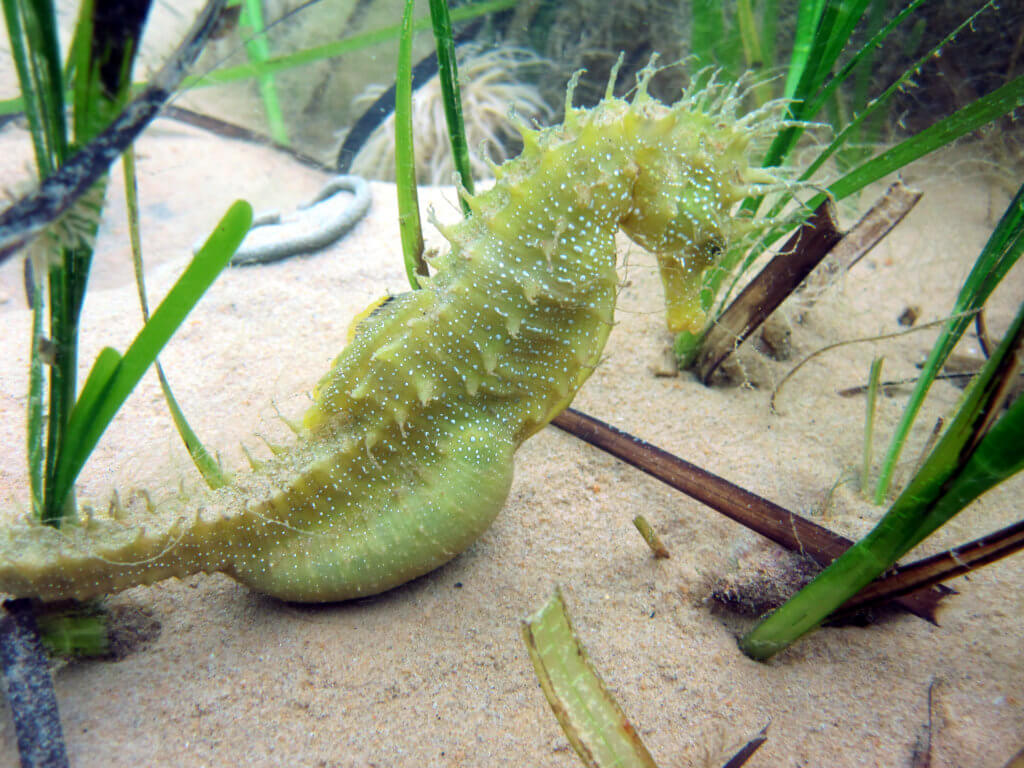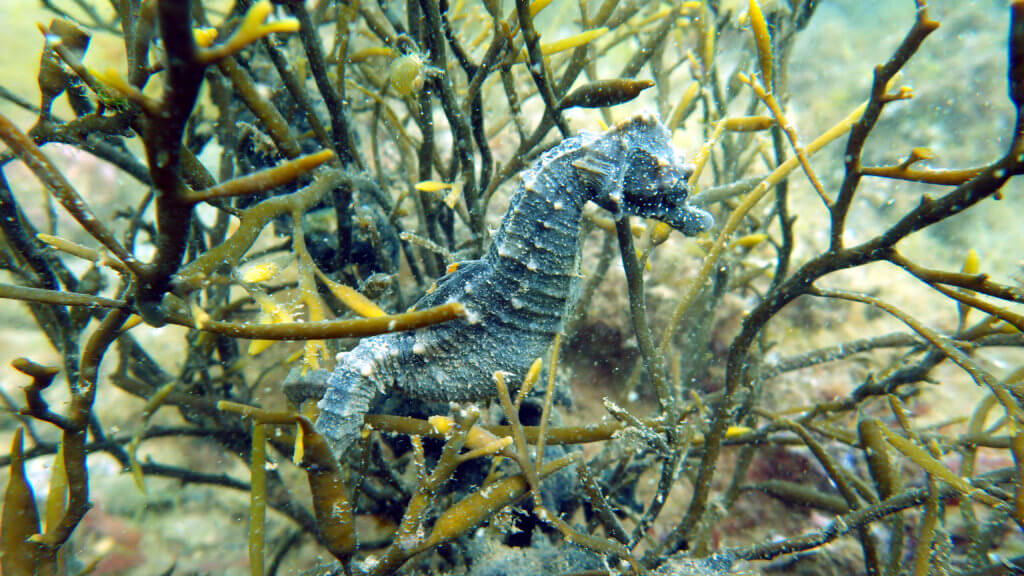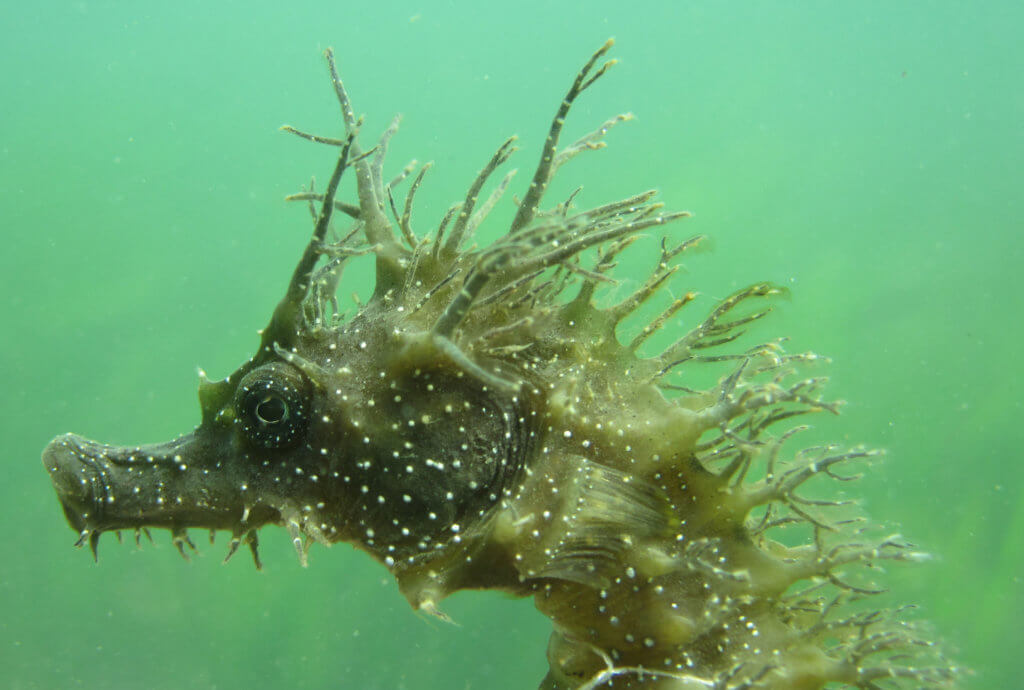
I am the founder and executive Director of The Seahorse Trust and have worked with seahorses from around the world for 42 years and I have concentrated on British seahorses since the early 1990s.
Prior to my research, seahorses were not considered to be a native species but just an accidental visitor, however having an inquisitive mind and after setting up the British Seahorse Survey in 1994 I started to think that this small fish could actually be indigenous to our waters.
The data we have on the World Seahorse Survey (formally the British Seahorse Survey) is sent in by divers, fishermen, researchers and beach walkers and we have also scanned museums and historic text to find out more about this ‘Little horse of the sea’.
For the British Isles and Ireland we have roughly 1,900 records and the earliest confirmed one is from 1821. There are two species here, the Spiny Seahorse (Hippocampus guttulatus)

and the Short Snouted Seahorse (Hippocampus hippocampus)

The Spiny tends to live in seagrass in the warmer months of the year and the Short Snouted anywhere else, although they both overwinter together in deeper water.
The winter and summer territories are their places of shelter and the periods between are when they are migrating to and from the deep.
After studying this database for so many years I was starting to think that the sheer quantity of seahorse sightings were too many for them to be an accidental visitor to our shores especially when they were being found as high as the Shetland Isles and all around our coastline.
We had already submitted both species to be included under the Wildlife and Countryside Act (WCA) but we needed proof that they were breeding here. We had fry, juveniles, sub adults and adults and even pregnant males but no solid proof that they got pregnant, gave birth and got pregnant again; making them indigenous.
The chance came in 2008 when we were notified of seahorses in Studland Bay (on the edge of Poole Bay) and so we set up the Studland Seahorse Project with an amazing group of volunteers and project partners, such as Southampton University, to gather data on a resident population of seahorses.
Since 2008 we have continued this study and we have done dive after dive; thousands of hours underwater and got the very proof we were after (and now also on other sites). We have monitored lots of individual males and pairs (through facial recognition studies) as they set up territories and got pregnant and gave birth many times within a season before they headed to the depths of Poole Bay to overwinter, safe from the storms but not safe from mankind’s interference.
Whilst this was going on we had submitted the seahorses for protection under the WCA and spent 6 years (from 2002) submitting data and knowledge to the authorities and on the 6th of April 2008 we were finally successful in getting both species (the Spiny and Short Snouted Seahorses) accepted as British and also protected under the WCA.
However protection is only any good if the authorities actually enforce that protection. Sadly since 2008 Studland Bay has lost its seahorses, despite our warnings due to over use by boats and fragmentation of the seagrass which has broken down the eco-system that seahorses are totally reliant on. We are hoping they will return if we manage to get the bay protected as a Marine Conservation Zone, which we should know about this year, after the third time of trying.
And now their over wintering place of shelter is under threat from oil exploration and a lack of enforcement of this protected species.
An exploration rig has already been allowed to sit on top of seahorse territory (we had proven seahorses were and had been there) and an extension was granted. In the first instance the environmental impact assessment was incomplete and in the second case it was ignored by Department for Business, Energy & Industrial Strategy and so we are preparing a legal challenge to the Secretary of State over this. We are seeking a judicial review so this cannot happen again.
To do this we have prepared a Crowd Justice campaign to raise the funds to take this to court. We are incredibly lucky to have Susan Ring of Harrison Grant take on this case and she has done all the initial work pro bono and has offered to take on our case on a no win no fee basis.
Please kindly read our appeal and make a donation, this court ruling will affect so many species and we need to get the judicial review done to protect our very fragile enviornment.

All images by Neil Garrick-Maidment
[registration_form]
For me, the Crowd Justice link isn’t working.
Wendy – thanks but for me it is.
A proper Environment Act would ensure that it is not the public or small charities who have to undertake such challenges. With this government that will not happen.